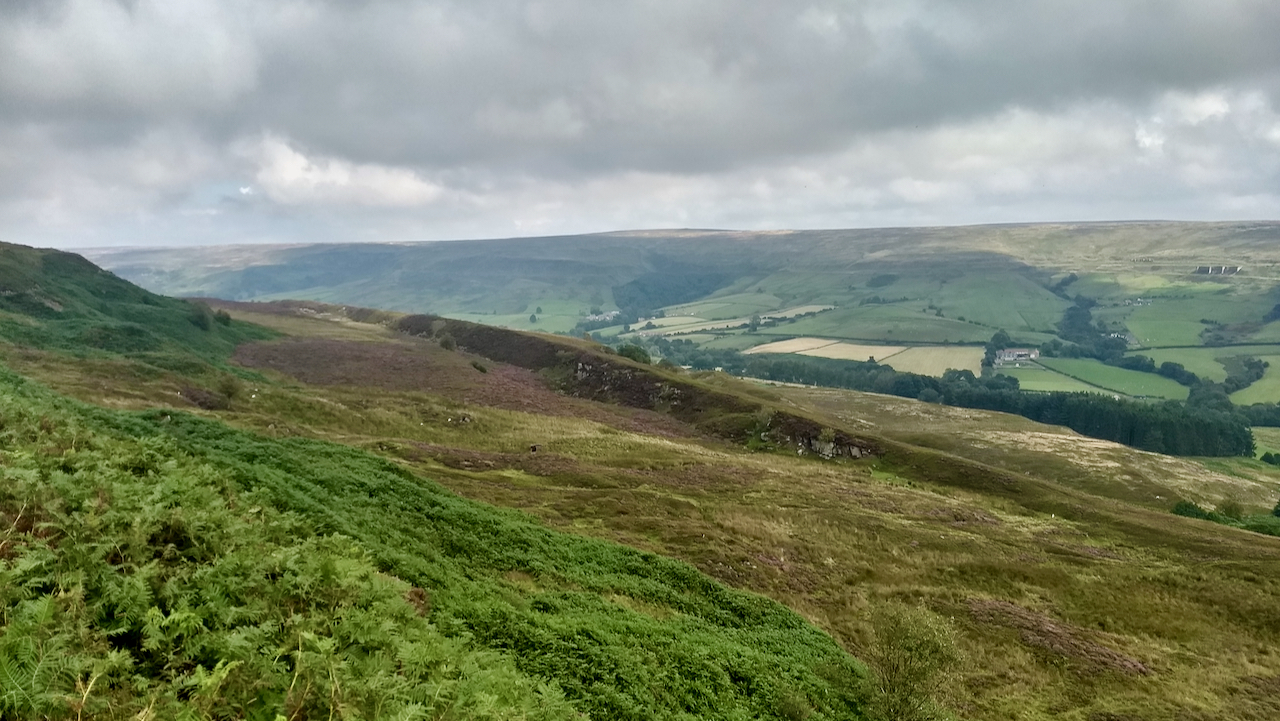This feature on the west side of Rosedale below the old mineral railway has always intrigued me.
A ridge, perhaps a kilometre long, running parallel to the slope. It’s such an obvious feature yet it seems to have gone unobserved, or at least unrecorded as far as I can tell.
I was once asked if it was a quarry and after seeking the advice of a geologist neighbour, I’m pretty sure it’s natural. He said it was probably a rotational land slump as the incline of the strata would be sloping eastwards, so one layer of rock might have slipped down over another.
And sure enough, looking at the British Geological Survey map, the ridge does lie where a stratum of Saltwick Formation sandstone and siltstone bedrock outcrops on the hillside. The bedrock below is of a softer Whitby Mudstone Formation. So this stacks up. But I’m no geologist.
To me, this raises the question of why such a huge volume of rock should begin to move. Reasons could include ground saturation, freezing/thawing, earthquakes and the forces associated with glacial action. Perhaps there was no unique factor.
It is now accepted that the North York Moors were not covered by the last ice age, 25 to 13,000 years ago. Of course, there have been many other earlier ice ages.
Elgee suggests that the south-facing dales, Bransdale, Farndale and Rosedale may have had small glaciers at their heads. Such glaciers would have been slow-moving and have had a lesser impact on the landscape than the large, thick ones flowing south over the Stainmore gap and down the North Sea.
This is not as fantastic as it sounds, during the winter of 1878/9, the North York Moors experienced the worst snowfall on record. Railway movements on the ironstone line ceased and the houses in Rosedale were almost completely buried. It was to be 2½ months before the thaw began but drifts remained until late August.
It would not take much of an annual temperature drop for snow to remain all year round, and prolonged over 12,000 years, Elgee’s suggestion is not fanciful. I would be interested to know of any work done in this area.
[Ref030]

Leave a Reply